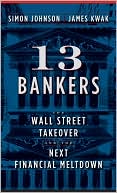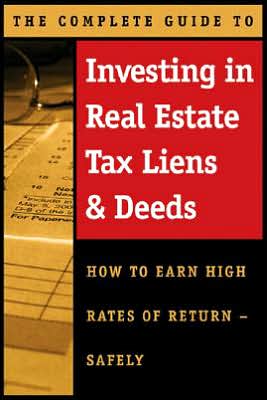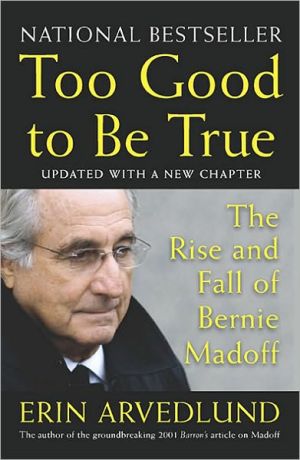The Health Care Revolution: From Medical Monopoly to Market Competition
America's market-based health care system, unique among the nations of the world, is in large part the product of an obscure, yet profound, revolution that overthrew the medical monopoly in the late 1970s.\ In this lucid, balanced account, Carl F. Ameringer tells how this revolution came into being when the U.S. Supreme Court and Congress prompted the antitrust agencies of the federal government—the Federal Trade Commission and the Justice Department—to change the rules of the health care...
Search in google:
"In The Health Care Revolution, Carl Ameringer elucidates as no one else has done the central importance of antitrust regulation as health care policy in the United States since the 1970s, with an inside view into the activities of the Federal Trade Commission. An exciting, lucid, and ambitious book."—Rosemary A. Stevens, author of The Public- Private Health Care State "Carl Ameringer's penetrating scholarly vision permits him to see inside the medical and legal professions. The result is an authoritative monograph that will claim the attention of scholars and policymakers because it frames the modern history of medical care in new and important ways."—Edward D. Berkowitz, author of Something Happened: A Political and Cultural History of the Seventies
The Health Care Revolution From Medical Monopoly to Market Competition \ By CARL F. AMERINGER \ University of California Press Copyright © 2008 The Regents of the University of California\ All right reserved.\ ISBN: 978-0-520-25480-0 \ \ \ \ Chapter One The Professional Regime \ This chapter traces the evolution of the medical profession from the late 1800s to the mid-twentieth century. Three questions frame the discussion: What factors gave rise to medicine's professional regime? How did the regime exercise its authority? What role did the antitrust laws play in the acquisition and retention of economic and political power?\ In discerning the answers to these questions, this chapter stresses the importance of ideas to the development of a profession's identity, its institutions, its internal culture, and its legal authority. Scientific progress in the late 1800s augured progressive reforms; progressive ideology, in turn, advanced the economic interests of physicians and their professional associations. Medicine's success-economic, political, and social-lay in nurturing professional authority vis-à-vis physicians, patients, insurers, governments, competitors, and institutional providers. Professional norms and beliefs, not force, secured physician unity and channeled dissent; legal rules and regulations in support of norms and beliefs aided medicine's domination of the health care industry.\ PROGRESSIVISM AND THE MEDICAL PROFESSION\ The ideas of progressive reformers were central to medicine's rise to power in the early years of the twentieth century. Progressivism's roots lay in the natural sciences (biology, physics, and chemistry, for example) and the rational, scientific approach to solving problems that these various disciplines employed. Scientific achievement gave rise to numerous inventions-the electric motor, the telephone, the phonograph, and incandescent lighting, to name a few. Medicine benefited as well. Discoveries by scientists and physicians led to sterilization techniques, bacteriology, and X-ray technology. These advances separated allopathic medicine (which employed conventional means, such as concentrated doses of drugs, to combat disease) from unschooled, self-described healers.\ Scientific achievement stimulated social reform. Many progressives believed that poor working conditions, political corruption, and abusive business practices, all of which intensified during America's Industrial Revolution, were, in part, the product of excess competition. In the words of Philander Chase Knox, President Theodore Roosevelt's attorney general, "Uncontrolled competition, like unregulated liberty, is not really free" (as quoted in Morris 2002:88). Government regulation was the antidote. Among the reforms that progressives prescribed were railroad regulation, child labor laws, occupational licensing, and antitrust legislation.\ The idea of "regulating" competition in the "public interest," based on scientific principles and standards formulated by experts, linked the ideas of progressives to the interests of physicians. Professionalism was a response to the perceived chaos of the nineteenth century, in which quacks, pretenders, and poorly trained practitioners proliferated for lack of educational standards and government regulation. Medical licensing, which took hold in the late 1800s, was a prime example. On the one hand, politicians gained from having professionals solve societal problems without having to expand the size of government; on the other, professionals furthered their own interests by wielding governmental authority to control competition. "From the perspective of those steeped in America's antistatist culture," historian Brian Balogh observed, "the hierarchy and self-governing mechanisms of the myriad professionalizing organizations were not unlike state and local governments: they dealt with problems without requiring the expansion of the centralized state" (1991:6).\ A major tenet common to both progressivism and professionalism was the belief that scientific knowledge was the principal domain of experts. Progressives believed that science was too complex for public consumption, that only experts with advanced education and technical training could grasp its features, and that only experts could apply scientific principles to public problems in an objective and orderly fashion (see Starr 1982:140). These perceptions elevated the status of physicians and distinguished medical work from commercial and business pursuits. Self-regulation was a logical outgrowth of progressive ideas. Because of their advanced knowledge and training, physicians were presumed to be the only ones capable of determining their own technical standards. A unanimous decision of the U.S. Supreme Court, announced in 1888, captured progressives' point of view. "Comparatively few," Justice Stephen Field wrote, could comprehend the "subtle and mysterious" nature of medical work (Dent v. State of West Virginia, 129 U.S. 114, 122-123 [1888]). By 1901, all states had delegated authority to the medical profession to set standards and to police itself (Starr 1982:104).\ For medicine, as well as for professions such as law and dentistry, codes of ethics were the principal means of regulating competition in the professional realm. The AMA Code of Medical Ethics, first enacted in 1847, "drew heavily" on the work of Thomas Percival, an English physician who in his 1803 book Medical Ethics emphasized professional courtesy and harmony, including the "self-silencing of criticism" (Brennan 1991:32; Berlant 1975:73; Fishbein 1947:36). According to medical ethicist Troyen Brennan, "Many of [Percival's] admonitions were meant to contain intraprofessional strife and to develop self-regulation" (Brennan 1991:32). By way of example, the code banned advertising and solicitation of patients, both widely perceived by physicians as divisive forms of behavior. Rules governing professional conduct, however, did not extend to practitioners outside the profession. Indeed, the code encouraged physicians "to bear emphatic testimony against quackery in all its forms." Homeopaths, eclectics, Christian Scientists, and later osteopaths and chiropractors became targets of physicians and their medical societies.\ Enacted in 1890 near the height of the populist movement, the Sherman Act reflected America's suspicion of concentrated power (Hofstadter 1991; Bickel 1983). Progressives, such as Presidents Theodore Roosevelt and Woodrow Wilson, objected to huge combinations, particularly large oil companies and railroad conglomerates owned by John D. Rockefeller, J. P. Morgan, and other business tycoons. Yet, despite the occasional action against a megacorporation, early Sherman Act enforcement efforts more often affected small companies. The simple reason was that cases against small companies were easier to win (McCraw 1984:115). Louis Brandeis, who was Wilson's chief economic advisor from 1912 to 1916, sought to correct this situation. Brandeis believed that small producers were more efficient than large ones. He criticized Dr. Miles Medical Co. v. John D. Park & Sons Co. (220 U.S. 373 [1911]), a Supreme Court decision that held that a manufacturer's pricing agreement with several retail outlets constituted price-fixing. Brandeis's central concern was that manufacturers would seek to integrate forward into wholesale and retail trade in order to control prices (McCraw 1984:102). Such "combinations," Brandeis claimed, would destroy rather than enhance competition (McCraw 1984:97; Strum 1993:81).\ The philosophy of Brandeis and other progressives underlay passage of the Federal Trade Commission Act in 1914. Brandeis viewed the act as central to Wilson's New Freedom initiative, which targeted the "great trusts." The Federal Trade Commission, Brandeis proclaimed, should investigate big business and help the Department of Justice enforce compliance with the Sherman Act. It also should provide information to small businesses seeking a level playing field in their battles with large corporations (McCraw 1984:111-112; Mason 1956:403). But the fanfare that accompanied the FTC's inauguration did not last very long. An adverse ruling of the Supreme Court in 1920, coupled with weak appointments to the commission by President Wilson, doomed the agency to second-class status for the next several decades (McCraw 1984:122-128).\ Efforts of the AMA to curtail competition were unaffected, for the most part, by the antitrust laws. Indeed, the association revised the code in 1903 to regulate physicians' fees and to prohibit contract practice (Berlant 1975:101, 106). Though the AMA again revised the code in 1912, this time to eliminate "all recommendations for setting fees" (Berlant 1975:102), the change did not undercut the profession's fee-setting capabilities. A major reorganization of the AMA in 1901 had created a policy-making body, the House of Delegates, which comprised representatives from state and local medical societies (Johnson and Jones 1993:6, 42-43). State and local societies could regulate fees just as well as the AMA, if not more effectively. Although some societies faced prosecution under state antitrust laws, the threat was minimal. "Neither the threat of antitrust prosecution nor the constitutional provisions against price-fixing prevented the profession from framing fee schedules in most states," historian James Burrow noted (1977:107). Attorneys general in some states, such as Kansas, pursued price-fixing litigation against physicians, but authorities in other states, Texas and Iowa among them, determined that state laws did not prohibit fee schedules (Burrow 1977:108).\ ABRAHAM FLEXNER AND THE REFORM OF MEDICAL EDUCATION\ Undoubtedly the most significant achievement of the medical profession during the Progressive Era was reform of medical education. Many physicians believed that efforts to improve standards through rigorous training and a comprehensive, science-based curriculum would end "inordinate competition and all the evils of an unstable market" (Rosen 1983:64). By making it harder for individuals to enter the profession, medical schools would produce fewer doctors, and those doctors that schools did produce would be more highly trained and competent than in the past.\ To be sure, Abraham Flexner's "muckraking" report of 1910, prepared for the Carnegie Foundation for the Advancement of Technology, advanced medicine's cause. But Flexner was not the first to assess the profession's educational status. The AMA had initiated inspections of medical schools before 1910 through its Council on Medical Education. The council conducted three tours of inspection, the first two between 1906 and 1910. Based on a rating scale devised to assess such things as the quality of clinical instruction, curriculum, admission requirements, and facilities, the council targeted for closure all schools that fell below a 50 percent rating (the equivalent of an F; Dodson 1919). Morris Fishbein, the powerful editor of the Journal of the American Medical Association (JAMA), reported the results of the council's inspections: "There were 160 medical schools; 82 had been rated above 70, 46 between 50 and 70 and 32 below 50. The Council condemned medical schools conducted solely for profit, night schools, schools designed to prepare students to pass state board examinations, quiz courses and many others" (Fishbein 1947:250). The AMA's early efforts were productive. According to Fishbein (p. 268), "The Council on Medical Education reported a reduction in medical colleges from 166 in 1904 to 129 in 1911."\ Flexner, who began his inspection tour of medical schools in December 1908, "capitalized" on the work of the Council on Medical Education (Rosen 1983:63). Lacking formal training in medicine, Flexner received advice from leading physicians and faculty of the Johns Hopkins School of Medicine. Indeed, the Hopkins model, which stressed scientific research and clinical instruction, became the benchmark for Flexner's evaluation.\ Flexner called upon medical schools to tighten their admission standards so that candidates "would begin their professional training with adequate basic preparation, particularly in science" (Rosen 1983:64). Medical schools, Flexner said, should also require hospital affiliation to assure "effective teaching of clinical medicine" (Rosen 1983:64). Proprietary schools and those "poorly financed and equipped" failed the Hopkins test (Rosen 1983:64). According to James Johnson and Walter Jones, Flexner's report "was a classic case of research gaining influence through release at the right time, into the right hands. States responded to the report's scandalous findings with a wave of regulation that implemented the unified education model that the AMA and others advocated" (1993:6).\ Flexner's report accelerated a trend in school closures that had begun with the reinstitution of state licensure and the work of the Council on Medical Education. State licensing boards, under the control of professional associations, refused to license graduates from medical schools that the boards had not approved. In order to make the "approved" list, schools had to satisfy the AMA's standards, an expensive undertaking that forced proprietary institutions to upgrade their facilities and to extend the period of time for training prospective physicians. Because proprietary schools depended on tuition and fees to finance their operations, incoming students had to offset these new expenses. Many students lacked the means and the additional time required for medical training. Enrollments decreased, and the weaker schools closed (Starr 1982:118-119). In 1910, the year Flexner's report came out, there were 131 schools; twelve years later, there were only 81 schools of medicine (Rosen 1983:65).\ Progressive reform of medical education gave professional associations the ability and the opportunity to restrict the supply of physicians. The Council on Medical Education became, in effect, an arm of the state used for determining which schools made the "approved" list. "Even though no legislative body ever set up the Federation of State Medical Boards or the Council on Medical Education, their decisions came to have the force of law," Paul Starr suggested (1982:121). The creation of a private entity to perform a public function had important implications. Once formed, such an entity could monitor and control the flow of information between the public and the private sectors.\ AMA control of medical school enrollments spilled over to graduate medical education. Though professional organizations comprised of medical specialists developed separately from the AMA in the 1920s, by the late 1930s, the AMA had achieved a prominent role in specialty education, including internship and residency training. Again, the Council on Medical Education became the central mechanism for approval of specialty boards, their standards, and their practices (Stevens 1971:213-214). In addition, the council, almost by default, assumed responsibility for the inspection and recognition of hospitals for internships and residencies. To be sure, the AMA wanted it this way, but no other suitors existed. Medical schools lacked the required resources, and the Advisory Board for Medical Specialties formed in 1933 was, as its name suggested, "advisory" in nature (Stevens 1971:212-215, 260-263).\ CONTRACT PRACTICE AND THE AMA'S TEN PRINCIPLES\ Contract practice originated in the railroad, mining, and logging industries of the late nineteenth century. Physicians provided medical services to groups of patients for a fixed fee, unlike the traditional fee-for-service model. Industrial corporations, indemnity companies, benevolent and fraternal orders, farm cooperatives, and hospital associations were among the entities that engaged physicians at discount prices. Competition among physicians was so intense and incomes so low that many doctors readily accepted the discount rates (U.S. Congress, Senate, 1974:1598 [Treatise by L. S. Helland, Re: Structure of Health Care Delivery]; Burrow 1977:15, 119-132). Contract practice touched any area of the country where low-income farm workers and industrial laborers congregated.\ The medical profession opposed contract practice and its counterpart, the corporate practice of medicine. Contract practice concerned physicians who sold their services to organizations or entities for a fixed fee; "corporate practice of medicine" referred to those organizations that marketed physicians' services. There are at least three reasons why medicine opposed contract and corporate practice: first, independent practitioners viewed most organizations that provided health care, such as dispensaries, clinics, or hospital associations, as potential competitors; second, physicians feared that if such organizations gained a foothold, they would dictate the terms of payment; third, practitioners believed that corporate intermediaries would interfere with their clinical autonomy (Starr 1982:25, 215-218; Rosen 1983:97-108). While the profession could invoke medical ethics to prohibit doctors from undertaking contract practice, it needed states to enact laws to prevent companies from pursuing the corporate practice of medicine.\ (Continues...)\ \ \ \ Excerpted from The Health Care Revolution by CARL F. AMERINGER Copyright © 2008 by The Regents of the University of California. Excerpted by permission.\ All rights reserved. No part of this excerpt may be reproduced or reprinted without permission in writing from the publisher.\ Excerpts are provided by Dial-A-Book Inc. solely for the personal use of visitors to this web site.\
Foreword Carmen Hooker Odom Daniel M. Fox Samuel L. Milbank xiPreface xiiiIntroduction 1The Professional Regime 21Precursors of Change 42The Triumph of Market Theory 59The Federal Trade Commission Takes the Lead 78The AMA Case 100A Question of Jurisdiction 119Drawing the Line between Clinical and Business Practices 135The Quest for Antitrust Relief 155The Demonization of Managed Care 173Conclusion 196References 211Index 231








